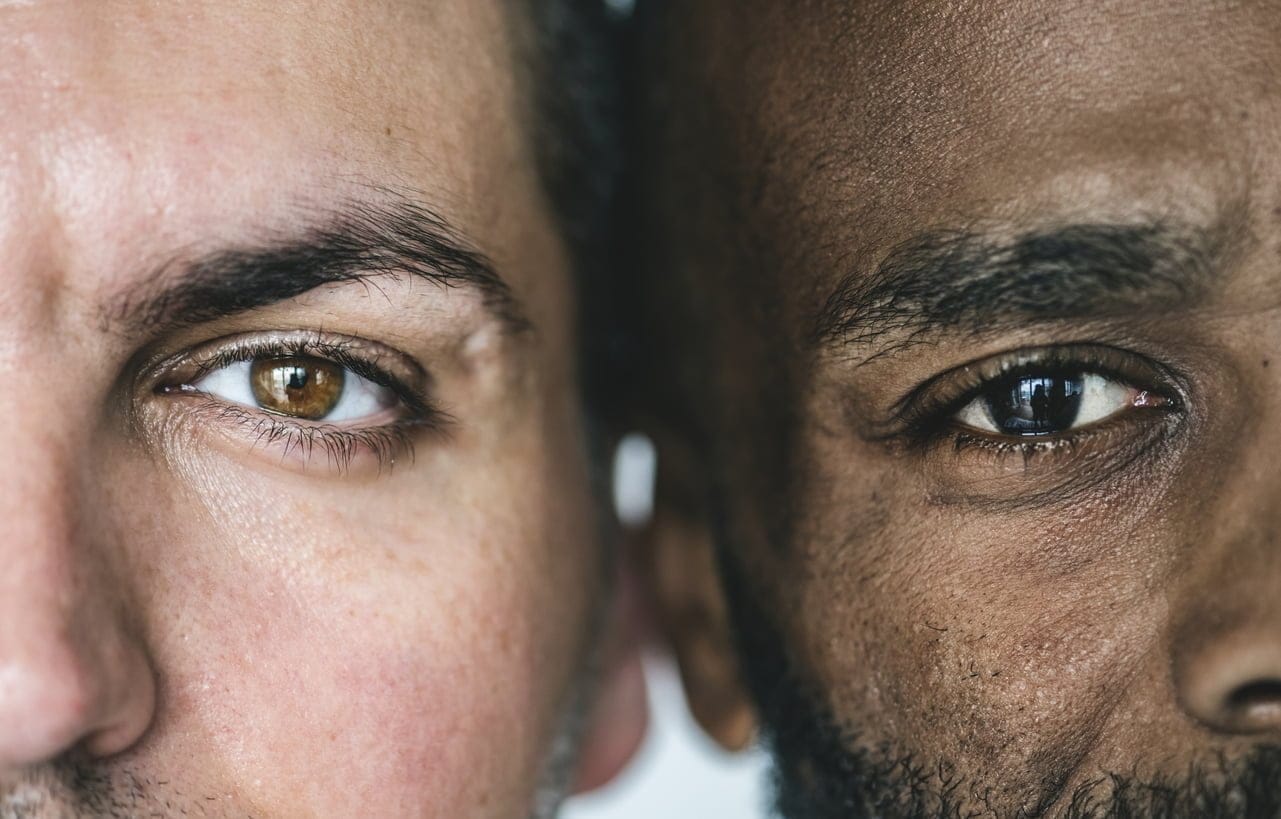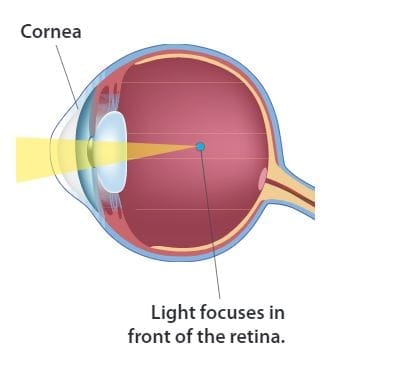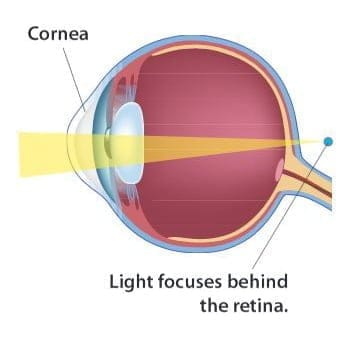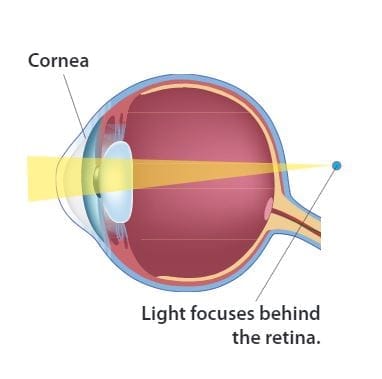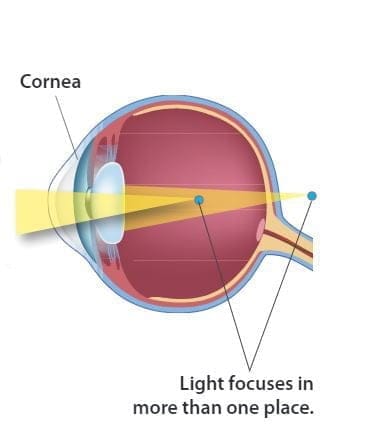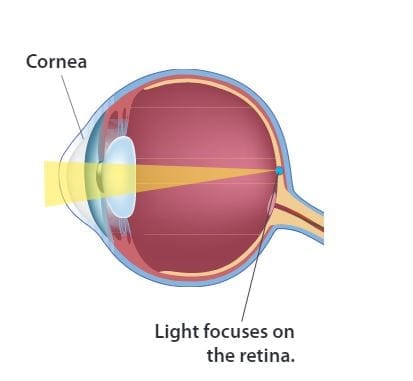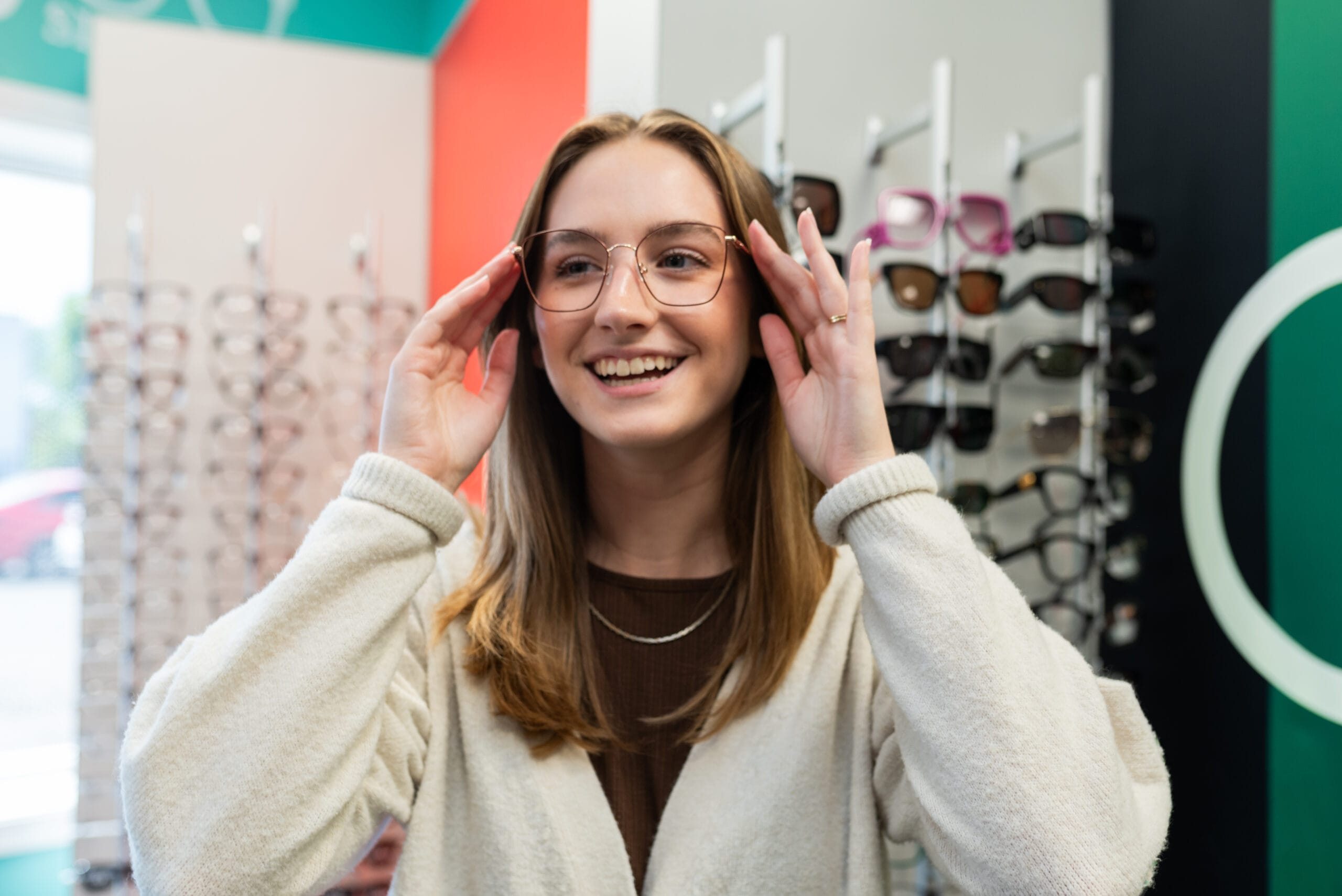Refractive errors impact our eyesight differently, altering how we see the world. Refractive errors are a type of vision problem that makes it hard to see clearly. Some of these errors blur distant objects like road signs, while others make close-up tasks like reading books or menus challenging. There are also refractive errors that affect both near and far vision, causing blurriness at all distances. Myopia vs Hyperopia, Presbyopia, and Astigmatism are four common refractive errors that affect our vision. Let’s break down what each of these conditions means, look at why they happen, and explore how they can be managed. So, whether you wear glasses, are thinking about getting them, or just want to know more about your eyes, keep reading!
Myopia vs Hyperopia
Most people who need corrective lenses usually have Myopia (nearsightedness) or Hyperopia (farsightedness). The main difference between the two refractive errors is where the point of focus occurs on the retina. With myopia, it occurs in front of the retina; with hyperopia, it occurs behind your retina. However, there are some key differences in how they develop.
Myopia is the most common refractive error and can develop at any age. In fact, One out of two people have it. According to the AAO, studies show myopia is becoming more common among children. Alternatively, Hyperopia is typically present at birth, and most children have it but might not have noticeable symptoms until later as the eye grows.
Myopia
Myopia, commonly known as “nearsightedness”, is the most common refractive error. Objects up close appear clearly, but distant objects are harder to focus on, which makes them appear blurred or unclear.
What causes Myopia?
This happens when the length of the eye grows longer than it needs to be or there are problems with your cornea or lens. This causes light to focus in front of the retina instead of on it, which makes far-away objects look blurry.
Myopia Symptoms
The most common symptoms of myopia are:
- trouble seeing things that are far away
- needing to squint to see clearly
- eye strain (sore or tired eyes)
Myopia Treatment Options
The most common treatment for myopia is eyeglasses or contact lenses. Your eye doctor will prescribe the right lenses to help you see as clearly as possible.
Myopia Management
While there is no proven link to the increase of myopia in children, research suggests that children who spend more time indoors doing activities (such as computer time, video games, and reading) have higher rates of myopia than those who spend more time outdoors. While myopia can’t be reversed, eye doctors are looking at treatments that slow the progression of myopia.
Hyperopia (Hypermetropia)
Hyperopia, commonly called farsightedness, happens when far away objects look clear, but objects close-up appear blurry.
Hypermetropia vs Hyperopia
Hyperopia is sometimes called “hypermetropia”, but both terms are used interchangeably.
What causes Hyperopia?
Farsightedness happens when the length of the eye is shorter than it needs to be, so the lens of the eye struggles to focus when looking at distant objects. This can also happen if there is a problem with the shape of your cornea or lens. Most people with hyperopia are born with it, and might not immediately notice symptoms.
According to NIH, children with severe far-sightedness are at risk of developing amblyopia (lazy eye).
Hyperopia Symptoms
- The most common hyperopia symptoms are:
- Trouble seeing objects up close
- Eye strain (sore or tired eyes)
- Headaches while reading
Hyperopia Treatment Options
The most common treatment for hyperopia or hypermetropia is eyeglasses or contact lenses. Your eye doctor will prescribe the right lenses to help you see as clearly as possible at all distances.
Presbyopia vs Myopia
Presbyopia
Similar to myopia vs hyperopia, presbyopia occurs when your eyes gradually lose the ability to focus. A normal part of aging, people typically notice symptoms of presbyopia around age 40. The normally flexible lens of the eye gradually loses elasticity, affecting the focusing ability of the eye. There is no way to stop the progression of presbyopia, but it can be treated and managed with glasses or contact lenses. For those who have trouble seeing both near and far may benefit from progressive lenses.
Astigmatism
When you have astigmatism, it is the result of a misshapen cornea. Instead of the cornea being perfectly rounded (basketball shaped) the cornea more closely resembles a football or an egg shape. The misshapen cornea causes the eye to refract light in such a way that it produces 2 distorted images on the back of the eye, as opposed to one clear image. This makes close and distant objects look blurry.
Astigmatism Treatment
Astigmatism is a very common eye problem in people of all ages. Astigmatism is most commonly treating with glasses or contact lenses. It is possible to have astigmatism and not know it. It can worsen over time if left untreated, so it’s important to get eye exams regularly.
Here are some symptoms to look out for:
- headaches
- eye strain
- difficulty driving at night (lights might appear distorted)
- blurry vision at different distances
Myopia and Astigmatism
Myopia and astigmatism are the most common refractive errors. It’s possible to have myopia and astigmatism at the same time. Importantly, there is no link that astigmatism causes myopia or hyperopia. Astigmatism is just a different refractive error. Myopia and astigmatism affect distance vision, but in different ways.
Astigmatism: Blurry vision at all distances, due to light focusing on multiple parts of the retina.
Myopia: Blurry vision far away, due to light focusing in front of the retina, instead of on it.
Having multiple refractive errors makes a prescription more complicated, but lenses can be customized to help you see your clearest.
Normal Vision (Emmetropia)
Emmetropia is the clinical term used by eye doctors to describe a person with normal vision, also known as ’20/20 sight. When your eyes do not require correction, the cornea and lens can focus light onto the retina (a layer that lines the back of the eye). This makes objects look clear. Ideally, the lens is relaxed when you are looking at distant objects and uses only a fraction of its focusing power when you are looking at near objects.
Schedule An Eye Exam
Eye exams are important to diagnose and correct vision problems like myopia, hyperopia, presbyopia, and astigmatism. Early diagnosis and treatment of eye problems could save your eyesight. Schedule an exam today.
